Parisian Color Palette: Black, anthracite and antique white, mercury glass and absinthe green
A touch of Montmartre style can be taken from Paris during the Belle Époque. Think Renoir and Toulouse-Lautrec at the Moulin Rouge. This look is vintage and sensual, a romantic tribute to the vivacious, bohemian neighborhood known for its music halls, absinthe drinkers and the film Amélie Poulain.

Photography by Ian Holmes.

Photography by Ian Holmes.

Photography by Ian Holmes.
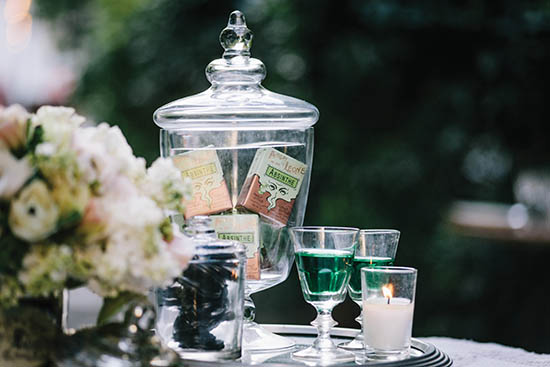
Photography by Ian Holmes.
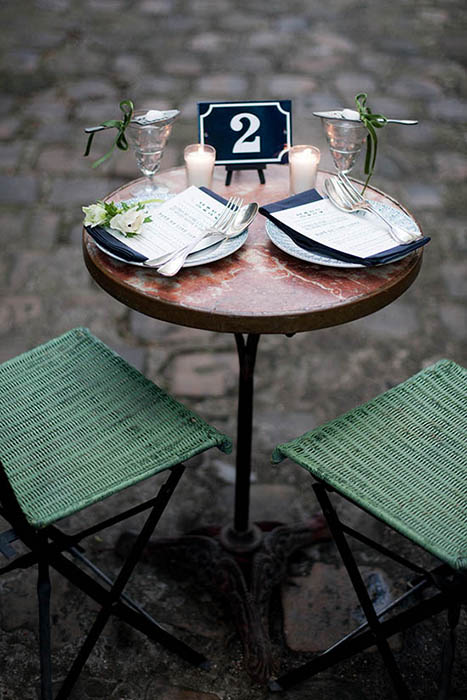
Photography by Ian Holmes.
| Venue |
| Private home |
| Design and Styling |
| Kim Petyt, Parisian Events |
| www.parisianevents.com |
| Photography |
| Ian Holmes |
| www.ianholmes.net |
| Flowers |
| Atelier Lieu-Dit |
| www.lieu-dit-paris.fr |
| Letterpressed Menu |
| Paper + Cup |
| www.papercupdesign.com" |
| Cake |
| Sugarplum Cake Shop |
| www.sugarplumcakeshop.com |
Tête à Tête with Paris Corset Designer Loanna Haseltine
Although an early version can be traced back as far as 2000 BC, the saucy undergarment that we now know as the corset didn’t become popular until the fifteenth century. It was then, legend has it, that the queen of France, Catherine de Medici, banned “thick waists” from her court. She supposedly had an iron corset designed that she would force any lady in her court that couldn’t wrap both hands around her waist to wear.
Through the centuries that followed, as fashion evolved, corsets evolved, ditching the iron for lace, and incorporated ivory or whalebone “busks” that cinched in the waists and elongated women’s shapes. By the late nineteenth century, corsets were a mainstay for women around the world, including the women of the Paris Belle Époque, as depicted by the corseted bourgeoisie ladies in Manet’s Jardin des Tuileries as well as the tawdry danseuses of Toulouse-Lautrec’s Moulin Rouge .
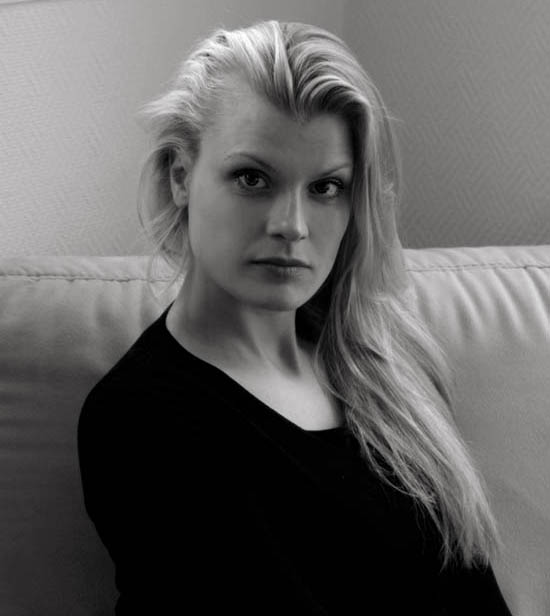
Image courtesy of Loanna Haseltine.
Loanna Haseltine is an American fashion designer living in Paris who specializes in handmade, artistic corsets. I met Loanna in her showroom in the Sentier garment district. Part showroom, part ladies boudoir—the corsets on display are more like works of art than pieces of clothing. I needed to find out how a girl from Alaska found herself designing couture corsets in Paris.
Haseltine: Since I can remember, I was passionate about designing and making clothes. When I was twelve years old, I saw a program on haute couture with Karl Lagerfeld, where he described the process of couture in Paris. They talked about the Chambre Syndicale de la Haute Couture, which is THE school in Paris to learn couture. From the time I saw that show, it was my idea to come to Paris to learn couture and eventually open my own house.
I eventually did come to Paris for school. Once, while still at the Chambre Syndicale, I answered a pretty generic ad in Le Figaro that led to an (unpaid) internship for John Galliano! At the time he was completely unknown. There were five people in the workroom and five people in the studio. It was a very grassroots outfit. There, I worked as an assistant to Bruno Barbier who was the chef d’atelier and the main draper for the big presentation pieces that John would use for his shows. When Bruno left and went to Ocimar Versolato who was designing for Lanvin, I followed him and then followed him to Christian Lacroix after that.
I was still interning during all of this, and although I was learning a lot, I really needed to find a proper position. With Bruno’s encouragement, I created a small collection and showed the photos of it in a book to different houses to try and find a paying job. My book eventually passed under the nose of the owner of Maria Luisa. At the time, it was the “Colette” of Paris fashion—if you were anybody, you had to be in Maria Luisa. I showed her my collection, she took some pieces for her store and things took off from there. Soon after, I started getting calls from the Herald Tribune and W Magazine . After that bit of publicity, buyers started contacting me and asking where they could see my collection. I started selling in lots of little boutiques around the world and before I knew it, I had a little business.
Tagged as “One to Watch” by Women’s Wear Daily , soon Haseltine’s pieces could be seen on the red carpet at Cannes as well as on Sex and the City ’s Carrie Bradshaw on television. Over the years, Haseltine has come to concentrate her business on the art of custom corsetry, which she sells through her Paris showroom and her online boutique.
Parisian Party: What’s the difference between a custom corset, and a commercially made corset found even in a higher-end lingerie or specialty boutique?
Haseltine: The differences between a commercially made corset and a hand-crafted one are huge. The old saying “You get what you pay for” really applies in the case of a corset. Commercially made corsets are mass-produced garments created for looks only. A low-quality corset isn’t designed or equipped for true waist shaping. They don’t use a front stiffening busk, usually have cheap plastic and/or bendable boning, and factory standard stitching. So they don’t hold their form and don’t offer any support. But the biggest difference is that commercially manufactured corsets don’t mold to the natural curves of your body like a handmade quality corset.
Our corsets are handmade completely in the traditional way by skilled corsetieres, who have specialized in authentic traditional corsetry. Many learned the craft from their parents and grandparents. Most of our pieces are one of a kind. We use quality fabric, luxury lining, and a canvas linen interlining to give comfort, good fit, and lasting durability. With each corset, I try to create a garment that’s a work of art that will last to be passed down through generations.
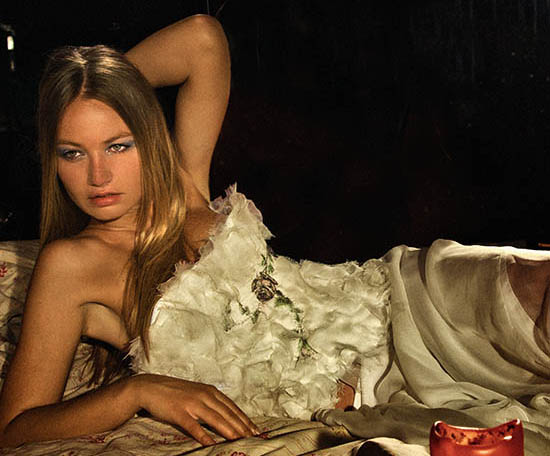
Image © Steven Lyon, courtesy of Loanna Haseltine.
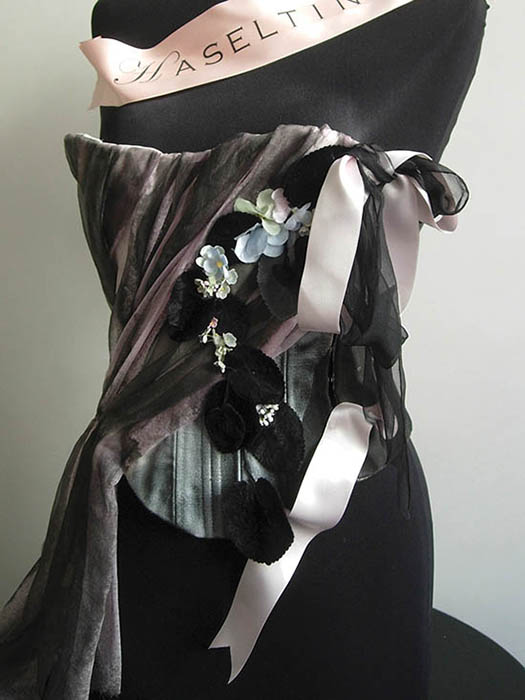
Image courtesy of Loanna Haseltine.
Parisian Party: What are the inspirations for your designs?
Haseltine: My concept is that beauty comes from the juxtaposition of completely diverse elements. When you take two opposite colors on the color spectrum and you put them together, that’s what creates strength and beauty. Oftentimes, I look for a conflict of elements that are very, very diverse or completely opposite and bring those things together. So I’ll work with materials like silk chiffon and leather. I became quite a specialist in working in those two elements early on.
My pieces are also custom, so I work with clients on what appeals to them. That’s the thing that I love about bridal clients; the piece is as much their dream as mine, so we create the piece together. I had a client who, since she was a little girl, always loved butterflies. But she’s a sophisticated adult now, so underneath the lace on her corset we hid little quilted butterflies and then we embroidered her and her husband’s names on the underneath of the other side. It’s those small ways that you help realize someone else’s dream.
Parisian Party: Who is the Haseltine client?
Haseltine: She’s really diverse—I’m always amazed. I have clients who are musicians in rock bands who want to wear a custom corset on their album cover or for shows. I also have mothers whose daughters are getting married and want to wear a wedding corset, but want something flattering and unique. After the wedding, they’ll pair the corset with a little jacket and a beautiful skirt; I’ve created pieces for celebrities who discovered my things in stores and then approached me to create a piece for them personally, as well. I once met Catherine Zeta Jones at a party while I was wearing one of my pieces. She loved it and then contacted me later to have a piece created for her.
Parisian Party: Tell me a bit about clients who aren’t in Paris and would like to order online.
Haseltine: For the online store, I created a selection of thirty pieces. Clients can take their measurements and send them to us via the form on the site. Any of the corsets on the website can be used to create a custom piece as well. We can work with color or fabric. I have a technique to blow up images and print them directly on the fabric. I’ve created pieces with these beautiful, abstract images from nature. If a client has an image they’d like to use, I can work with them to incorporate it into the piece. The corsets are all made here in Paris and then shipped out worldwide direct. Here in Paris, the showroom is open by appointment only, where we’re happy to receive clients and introduce them to Haseltine corsets.
| Haseltine |
| 67, rue Reaumur |
| 75002 Paris, France |
| www.haseltine-paris.com |
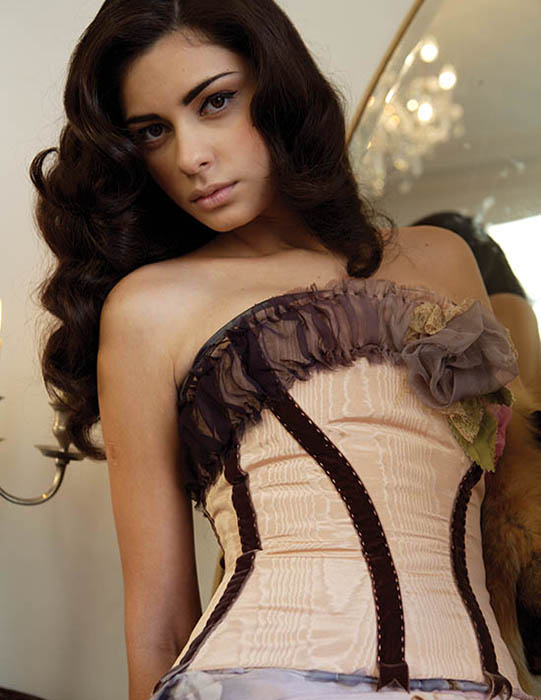
Image © Steven Lyon, courtesy of Loanna Haseltine.
French Wedding Tradition: The Normand Hole
The idea is to clean the palate and stimulate the appetite, to give you a feeling of emptiness so that you can go back and stuff more in!
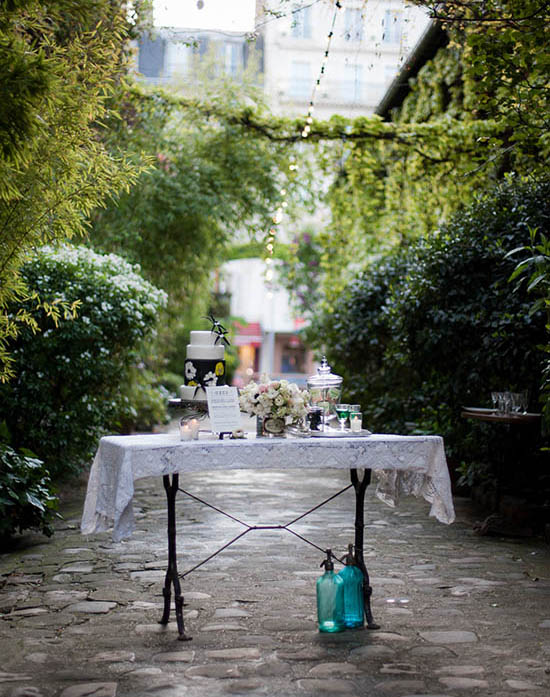
Photography by Ian Holmes.
You’re at your very first French wedding reception and you can’t believe that even though you sat down to eat well over two hours ago, they’re still bringing out food, without a hint of an end in sight. Before you even made it to the table, you stuffed yourself full of amuse-bouche (appetizers): Torsadées Feuilletées au Jambon, Tartinade de chèvre au basilic et à l’ail, and some little round meat things that tasted like cheese. Once comfortably seated à table (at the table), you gorged yourself on slabs of Foie Gras de Canard aux Figues and Son Chutney de Poire et Mangue , then Trois Crusacés pour Une Ecume and Son Coulis Pourpre followed by an amazing Magret de Canette Grillé Sauce Périgourdine.
After the plates are cleared, you scan the room for the happy couple, certain that it’s finally time to crack the croquembouche (the traditional French wedding cake made of crème-filled puff-pastry). Instead, a waiter appears in front of you and sets down a dainty glass of what looks like a scoop of ice cream but smells like fruity alcohol. Ah, the famous “hidden” French dinner course: Le Trou Normand (The Normand Hole).
Le Trou Normand is a strong alcohol served with a small scoop of sorbet that’s served during French weddings and large dinners. The idea is to clean the palate and stimulate the appetite, to give you a feeling of emptiness so that you can go back and tuck more in. The tradition, which started in Normandy, goes back several centuries. Originally, it was just a small glass of apple brandy (Calvados) served midway between a big meal. These days, any number of alcohols and flavors of sorbet can be served, depending on the region of France that you’re in or the course that is about to be served. Vodka and lemon sorbet go nicely with fish or seafood, whereas traditional Calvados and apple sorbet are perfect for foie gras.
To make your own Trou Normand, place one or two small scoops of high-quality sorbet (if you can’t find apple sorbet in the store, feel free to substitute with lemon or lime) into a pretty martini glass or champagne coupe, then slowly pour the Calvados over it, top it off with a sprig of mint or lemon zest, et voila ! It’s a simple recipe that can easily be incorporated into any French or Paris-themed wedding celebration.
Wedding Invitation Shopping in Paris
A person’s stationery tells you almost as much about the individual as his or her shoes do. Is the person casual, funny, serious or just plain boring? Does the person walk the walk and talk the talk (letterpress text on 100 percent cotton 300 gm paper stock), or is she all talk and no action (generic laser print on 28-pound Hammermill)? Everyone knows the value of having good-quality, well-designed business cards. But what about social stationery and invitations? Getting a tepid invitation to a “fabulous” party is kind of like meeting a handsome French doctor and then noticing that he’s wearing Birkenstocks and socks—the potential is there, but you’re not exactly sure if you want to make the effort to see it through.
With this in mind, it’s time to get thee to la papeterie (stationery shop)! First stop: Caractére in the 16th arrondissement—the Manolo of paper shops! From stunning couture invitations to luxurious Italian leather desk accessories, this store has it all. Maybe you want a classic look for the Sunday brunch that you’re hosting, have note cards or invitations engraved with your monogram or select a motif from Caractére’s huge catalog. If your style is more contemporary, you have the option of choosing a custom design from one of their exclusive graphic artists, like Veronique Deshayes.
Le Must (The Must) in Paris fine papers is Marie Papier in Montparnasse. If you’re a paper-aholic like me, this is as close to “off the wagon” as you can get. Marie Papier is stocked from floor to ceiling with notebooks, albums, Japanese writing papers, single stationery sheets and envelopes in a whole host of colors and textures, announcement cards, pens, pencils, inks and gorgeous packets of note cards. In addition, Marie Papier offers a bespoke invitation service, with a multitude of papers and styles to choose from.
If you’ve got an itch to go completely DIY with your invitations, you must make a detour into l’Art du Papier. There are several of these stores around Paris as well as an online store. They carry rubber stamps, inks, boxed stationery sets and scrapbooking materials, as well as the full line of Artoz papers. If you’re starved for inspiration, l’Art du Papier also hosts in-store classes and demonstrations.
While I appreciate the thought behind an e-invite just as much as the next girl, nothing beats the nostalgic jolt of excitement that I get when I see a hand-addressed invitation in my mailbox. Whether in Paris or Poughkeepsie, in my book, a gorgeous paper invitation equals a party that’s not to be missed!
| Caractére |
| 4, rue Mesnil |
| 75016 Paris, France |
| www.caractere-france.com |
| Marie Papier |
| 26, rue Vavin |
| 75006 Paris, France |
| www.marie-papier-paris.fr |
| L’Art du Papier |
| 16, rue Daunou |
| 75002 Paris, France |
| www.art-du-papier.fr |
Outfitting Your Parisian Bridal Trousseau
trous·seau, n. [French, from Old French, diminutive of trousse, bundle] The possessions, such as clothing and linens, that a bride assembles for her marriage.
Ask any woman in the world where the most desirable lingerie comes from, and she’ll undoubtedly say Paris. No “Fruit of the Loom Boy Briefs” to be found there. Lacy, sexy, beautiful women’s undergarments are the staple in Paris.
Back in the day, a young woman and her mother would start collecting and sewing items for her trousseau years before she was even engaged! They stored the items in a heavy hand-carved wooden wardrobe or trunk, and when it was complete, the trousseau contained everything that the girl owned—everything that she needed to start her new married life. Trousseaus could contain quilts, china, silverware, pillows or linens, in addition to clothing and lingerie. In Victorian times, it was even à la mode to host a Trousseau Tea the day before a wedding, where the bride’s family would invite people over and show off all the items in the girl’s trousseau. Today’s trousseau contains gorgeous lingerie, luxurious toiletries and fabulous going-away outfits, all packed into beautiful luggage.
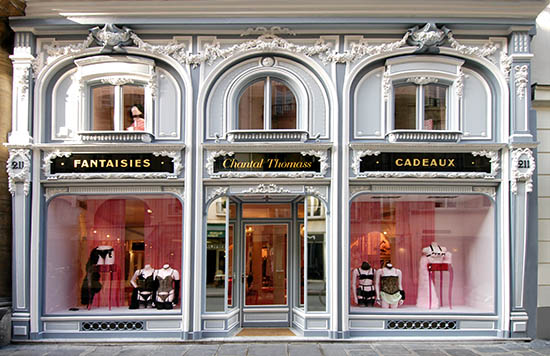
Today’s trousseau contains gorgeous lingerie, luxurious toiletries and fabulous going-away outfits, all packed into beautiful luggage.
Tête à Tête with Paris Wedding Photographer Ian Holmes
Ian Holmes is a dashing destination-wedding photographer based in Paris. Originally from the North of England, Ian came to Paris on a two-year contract to work for a pre-press firm and has ended up staying for more than a decade. He’s sought after for his journalistic approach to wedding photography. His goal, he says, is to create images that tell the story of the day as it happened, not as the photographer directed it. Ian and I met in a café on the Boulevard Saint-Germaine one chilly morning this past spring to talk about wedding photography in Paris.
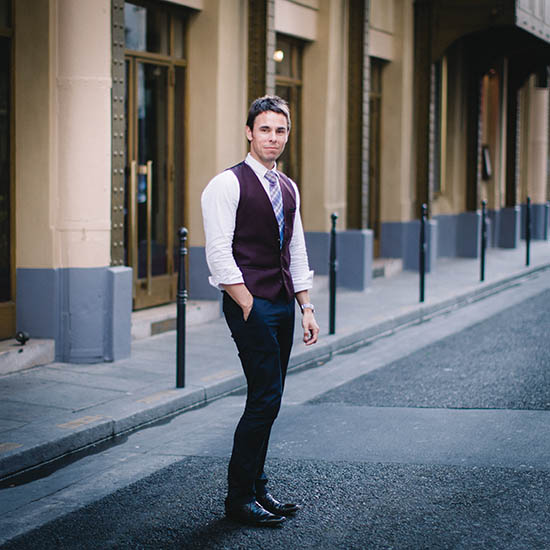
Photography by Catherine Ohare Photography.
Parisian Party: How long have you been a wedding photographer in Paris?
Holmes: I actually “stumbled” into wedding photography whilst out in the States in 2008 when I was working as a photographer for a New York–based lifestyle magazine. My first-ever wedding was shot in Los Angeles. After that followed a brief spell in England before returning to Paris.
Parisian Party: What advice do you have for couples choosing a wedding photographer from a distance?
Holmes: The majority of clients choosing a wedding photographer overseas browse websites to find something aesthetically pleasing, a style that catches their eye. However, it’s important to look beyond a photographer’s portfolio, which comprises a handful of their very best shots. Take some time browsing the photographer’s blog; it should give more of an idea of how they approach a wedding from beginning to end. It can (or should) also give an insight into the photographer’s personality. How pro-active are they in answering emails or any questions or concerns? Are they open to a conference call or Skype meeting? While the photos are obviously of primary concern, it’s important to look beyond that. Your wedding photographer is going to be a huge part of your day and it’s important that he or she is someone you’ll feel comfortable being around. If they have the best portfolio in the world but you feel you don’t really click with the person, my advice would be to move on to someone else.
Parisian Party: I know that many clients want a photo session around Paris at some point during their wedding. What advice do you have for couples planning this sort of session?
Holmes: One of my favorite parts of a Paris-based wedding is actually a photo shoot around the city. For someone not familiar with Paris, a great starting point for location scouting would be to browse the Internet (probably beginning with the photographer’s website), highlighting areas that appeal to them. If you then begin discussing the shoot with the photographer, he or she should be able to put together an itinerary based on the client’s timescale, mode of transport and desired locations. Regarding what to wear, a wedding gown always looks stunning on the city streets; however, less formal outfits may give more variation to the images as well as keeping the wedding gown pristine for the ceremony. Another consideration is whether to have the shoot before or after the ceremony. The advantage of the shoot before the ceremony is that the couple can enjoy their time with guests afterwards. The disadvantage (if the gown is worn) is the probability of a slightly dirty dress. For a wedding shoot I always recommend a chauffeur-driven car to take us around the city. Not only is it practical, allowing us to take in more locations, a beautiful, classic car makes a great addition to the photos.
Parisian Party: What are your top “money shot” locations for couples that hire you for a Paris wedding photo shoot?
Holmes: I always enjoy showing off the more subtle side of Paris in my photos. I’ve found it’s often the hidden areas that clients enjoy discovering the most—the old passages, a Paris backstreet, etc. Of course most clients want some recognizable landmarks included. I try to get a nice balance of the two.
Parisian Party: You have clients from all over the world who come to Paris for either wedding or engagement photos, but you also have a very strong Paris-based clientele. What are some of the differences between these clients? What do Parisian wedding couples look for in their photo shoots?
Holmes: With destination clients, a big part of their photography is showing off the city. The majority wants some of the classic Paris landmarks in the photos, the Eiffel Tower, the Louvre, one of the famous bridges, etc. I try and incorporate the landmarks with some of the hidden sides of the city to add a little variation. Clients often get back to me and let me know which images they had printed to hang on their walls, and generally it’s one of the images featuring an iconic Parisian landmark.
Parisians, on the other hand, aren’t particularly bothered about the Eiffel Tower. Most of them catch sight of it every day on their way to and from work. They often want to feature their local neighborhood. For example, I once had a couple that lived on a very lively pedestrian shopping street. This street had bakers, butchers, fruit shops, patisseries, wine stores—everything. They basically did their grocery shopping on their wedding day in full wedding attire. It was a fun shoot that turned a lot of heads.
Parisian Party: I know this may be a silly question, but why do you choose to be a wedding photographer in Paris?
Holmes: Paris has to be one of the world’s most stunning locations for a destination wedding. Seeing the city through my client’s eyes keeps it feeling fresh and exciting. The fact that I have such a magnificent backdrop to my images, get to work with some amazing people whilst doing a job I love makes me feel extremely fortunate.
| Ian Holmes, Photographer |
| www.ianholmes.net |
| Tel: +33 (0) 6 73 73 38 49 |
Pamela & Matt
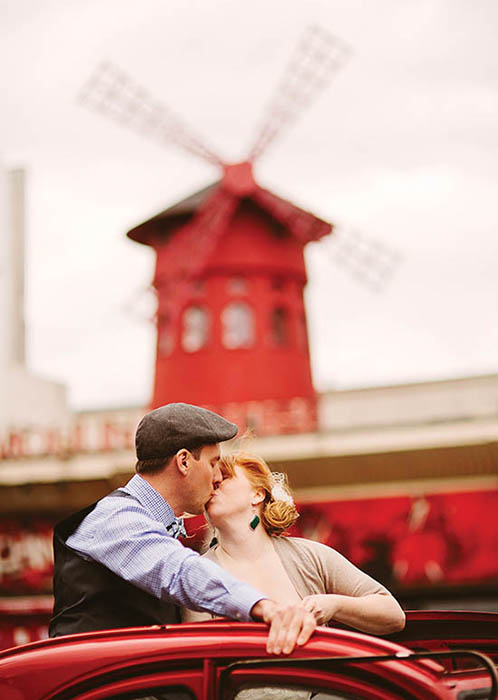
Photography by Milos and Natasa Horvat.
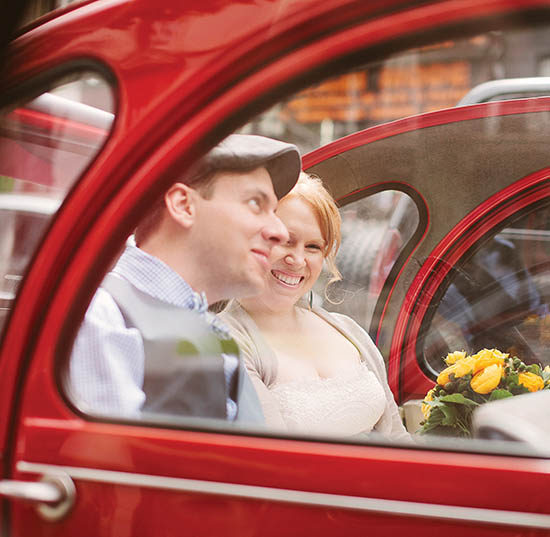
Photography by Milos and Natasa Horvat.
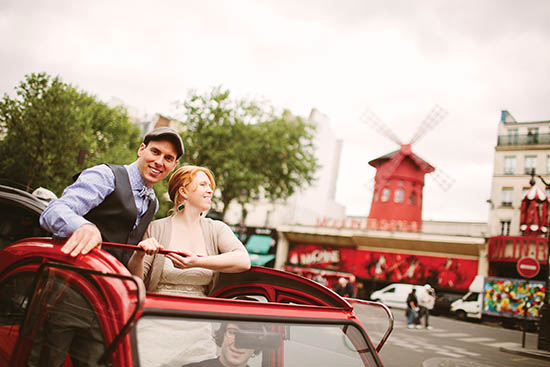
Photography by Milos and Natasa Horvat.

Photography by Milos and Natasa Horvat.
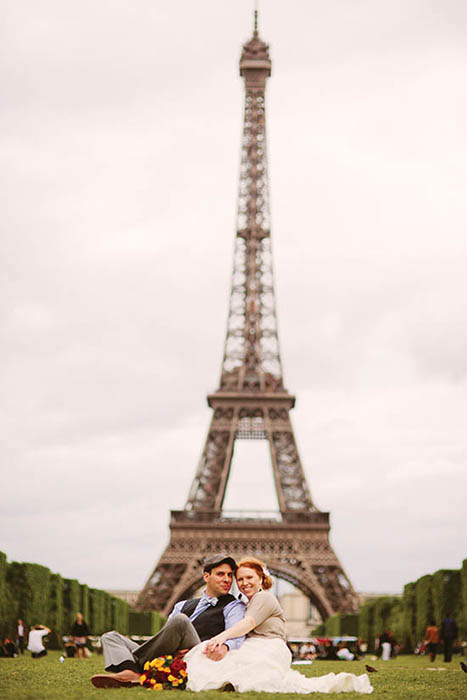
Photography by Milos and Natasa Horvat.
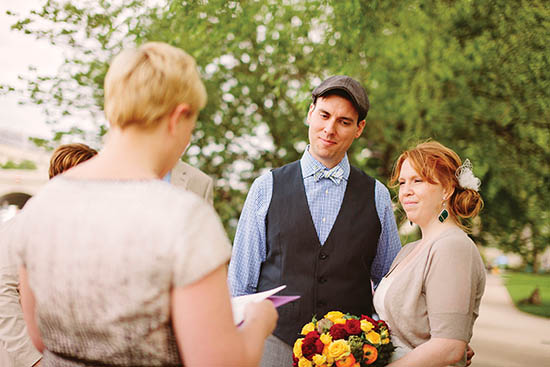
Photography by Milos and Natasa Horvat.
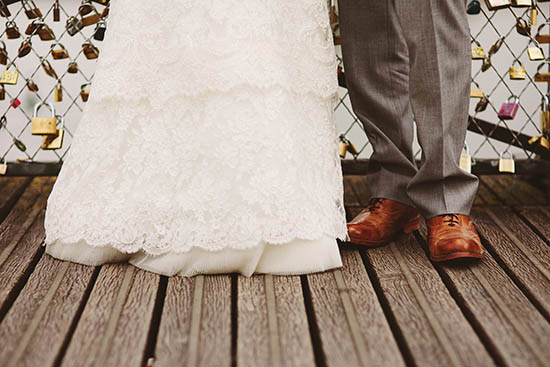
Photography by Milos and Natasa Horvat.
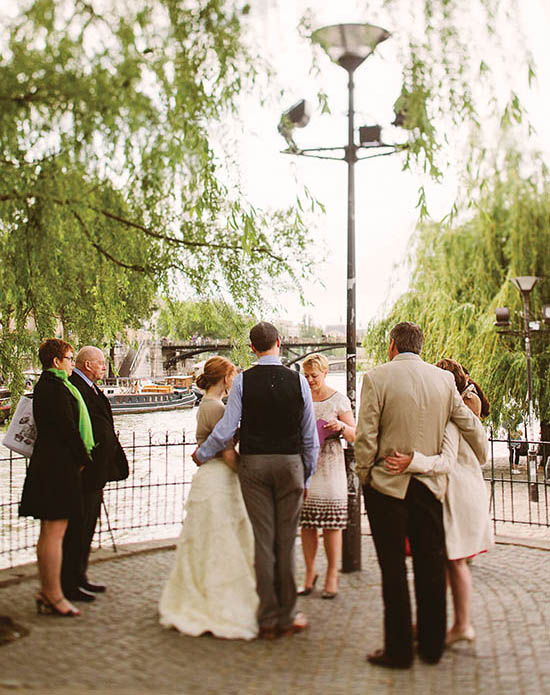
Photography by Milos and Natasa Horvat.
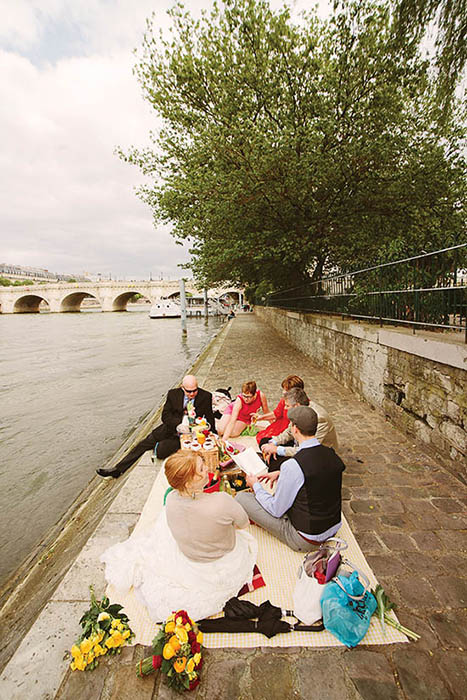
Inspired by their mutual love of the modern classic French film Amélie Poulain, Pamela and Matt’s sweet, intimate wedding celebrated both the beauty and offbeat charm of Montmartre as well as the movie. Like in the film, red was a predominant color throughout their event—in the vintage French car they rented to zip around town, in the Moulin Rouge, which was one of the landmark backdrops for their pre-ceremony photo session, and in the macarons and raspberries (Amélie’s favorite fruit) that were served during their picnic reception on the banks of the Seine.
Photography by Milos and Natasa Horvat.
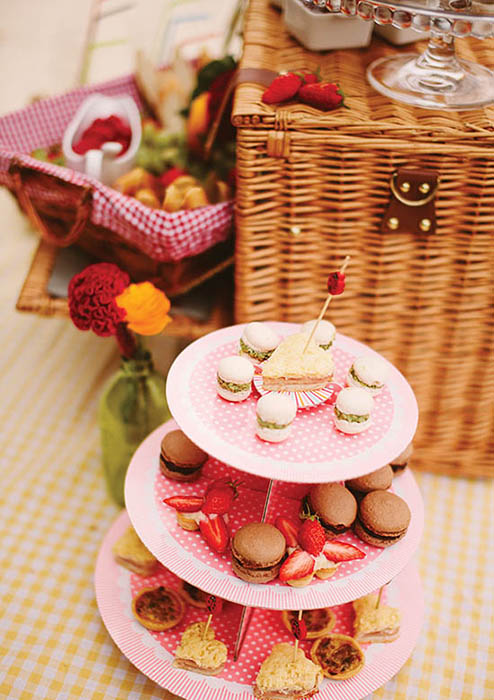
Photography by Milos and Natasa Horvat.

Photography by Milos and Natasa Horvat.
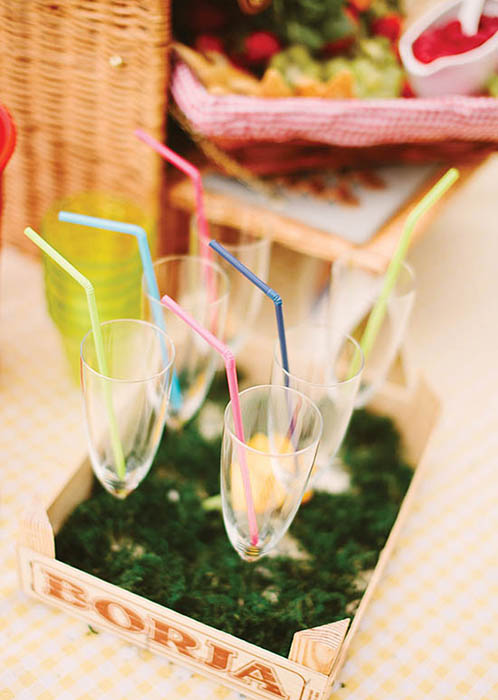
Photography by Milos and Natasa Horvat.
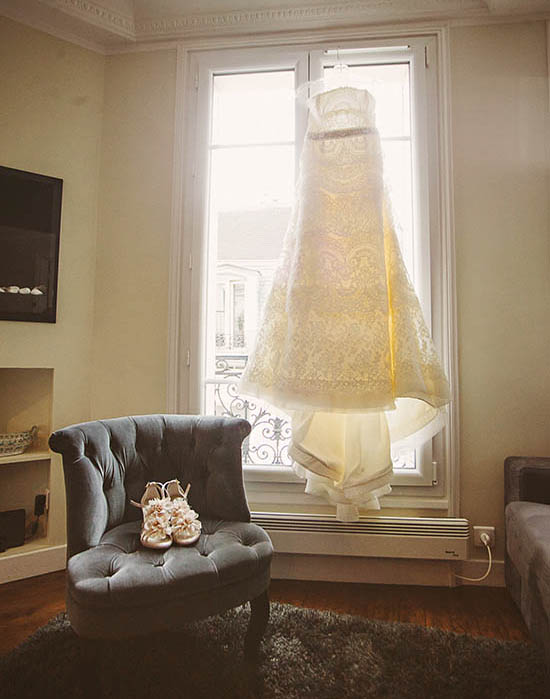
Photography by Milos and Natasa Horvat.
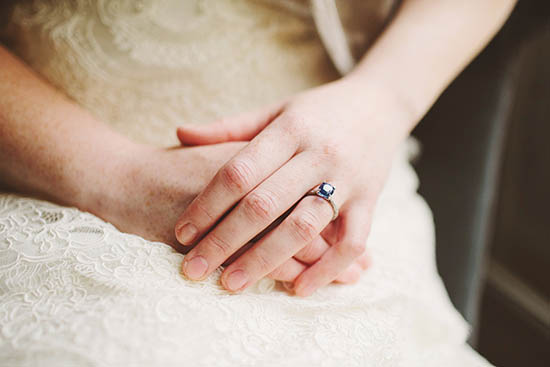
Photography by Milos and Natasa Horvat.
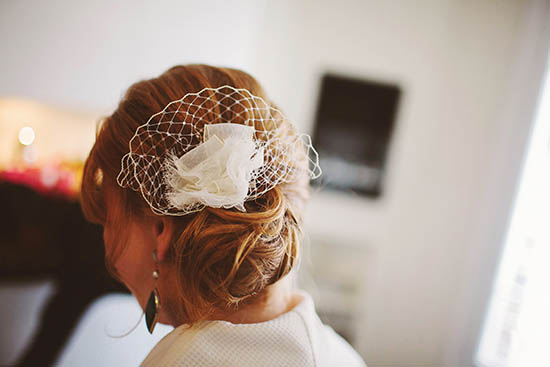
Photography by Milos and Natasa Horvat.
| Wedding Design and Coordination |
| Kim Petyt |
| Parisian Events |
| www.parisianevents.com" |
| Photography |
| Milos and Natasa Horvat |
| www.miloshorvat.com |
| Dress |
| Thirteen by Rivini |
| www.rivini.com |
| Hair and Makeup |
| James |
| www.jmsbyjames.com |
| Hair Fascinator |
| Jennifer Leigh Veils |
| www.jenniferleighveils.com |
| Earrings and Wedding Bands |
| Ramiro Ortego |
| www.finessejewelers.net |
| Waistcoat |
| Calvin Klein |
| Bowtie |
| Xoelle |
| www.etsy.com/shop/xoelle |
| Caterer |
| Kent Party Solutions |
| www.kentpartysolutions.com |